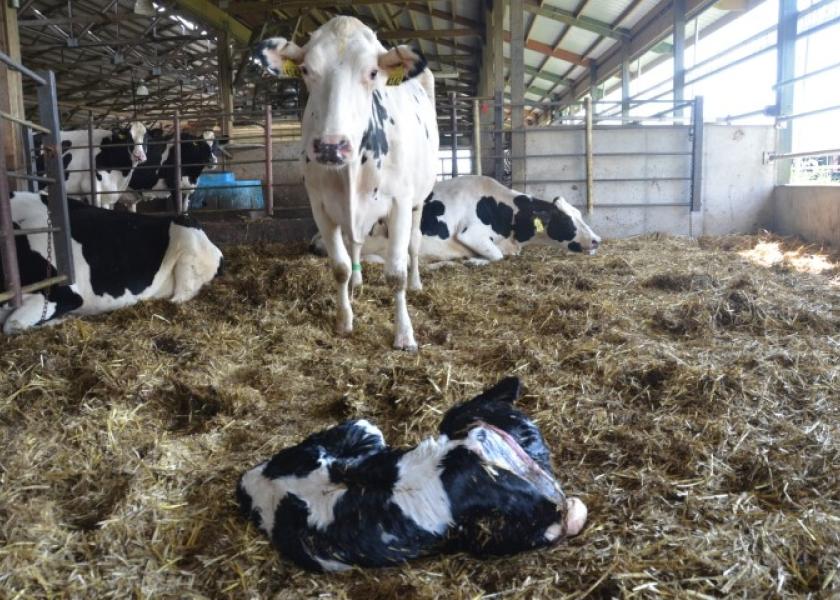Unnecessary Calving Assistance Could be Causing Metritis

Have you ever walked into the maternity pen, noticed an animal in labor, then immediately started to assist? We are all guilty of it, so probably so.
As dairy farmers, it is our job to always care for the cows. But according to a University of British Columbia study, providing unnecessary calving assistance could cause more harm than good later down the road.
Affecting even the healthiest cow on the farm, metritis, a metabolic and infectious disease experienced in transition animals, is a common illness that can have negative impacts on milk production and future pregnancy rates. Defined as a foul-smelling, reddish-brown discharge from the vulva, all cows experience some form of bacterial contamination within the uterus after calving. However, cows who experience dystocia (a difficult calving) or who calve too early, have an increased risk of contracting this metabolic disease.
The University of British Columbia study, which was held at UBC’s Dairy Education Research Center, investigated the association between factors around the time of calving, duration of labor, and the development of uterine diseases in dairy cattle.
A total of 567 Holstein cows were followed from 3 weeks before calving until 3 weeks after. Cameras were used to record calving time and duration and calving assistance. After calving, metritis was diagnosed based on vaginal discharge and body temperature measured at 6 and 12 days in milk (DIM). Duration of labor was estimated as time from the appearance of the amniotic sac until the calf was expelled.
The study found that there was a relationship between metritis and duration of labor for assisted cows, where the probability of metritis was greatest at the shortest and longest durations of labor, while the lowest probability of metritis (28.2%) was found when assistance occurred after approximately 130 min. There was no association of duration of labor with metritis for cows which did not require assistance, but on average, cows which did not require assistance had shorter durations of labor (57.5 ± 2.4 vs. 118.6 ± 5.5 min). Interestingly, subclinical endometritis at 35 DIM nor retained placenta was associated with the duration of labor, although cows calving larger calves were found to be in labor longer.
It was determined that providing assistance too early during stage II labor may result in an increased risk of metritis. Therefore, the scientists estimate that 130 mins after the appearance of the amniotic sac could be used as a reference point for providing calving assistance to reduce the risk of metritis.
For more on metritis, read:







